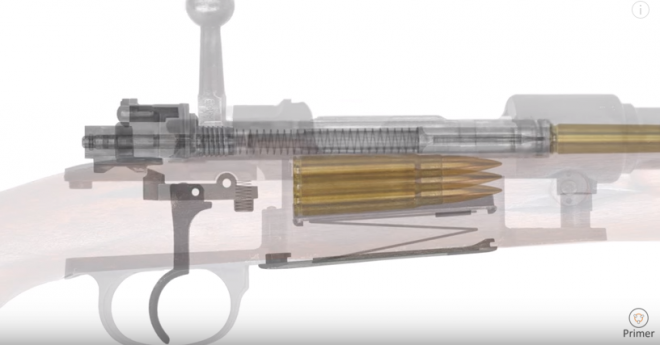While the base principle of how a bolt-action rifle functions has not changed since its invention, its always fun to see the individual takes that each designer uses when creating a rifle. The rifle served in multiple wars, principally to great acclaim in World War I. While replaced by the Karabiner 98k, which derived much of its design from the Gewehr 1898.
Courtesy of C&Rsenal (quite the fun up & coming channel) is a video showing an animated “x-ray” view of the venerable Gewehr 1898 bolt-action rifle from empty, through a full firing sequence, and reloading via stripper clip.
The powerful 7.92×37 Mauser rounds are loaded via a 5 round stripper clip. From there, the bolt is pushed forward and rotated, which aligns the locking lugs. The same movement going forward also sets the striker on the trigger and assuming the safety mechanism is disengaged, pulling the trigger releases the striker, igniting the round.
I particularly like the safety design which simple keeps the firing pin from going forward, creating a “dead trigger” unlike the common trigger-bar stopping safeties of today. While modern CNC can hold great tolerances, stopping the striker itself keeps the safety mechanism from relying on tolerance alone.
Check out the video below and C&Rsenal’s channel.
 Your Privacy Choices
Your Privacy Choices
